This post may contain affiliate links. Please read our disclosure policy.
I’ve been asked for years to share a gluten free bread recipe that actually works in a bread maker. If you’re looking for a traditional loaf baked in the oven instead, try my classic gluten free bread recipe.
But if you’ve got a bread machine, this one delivers reliable results with simple ingredients, clear steps, and even a dairy free option.
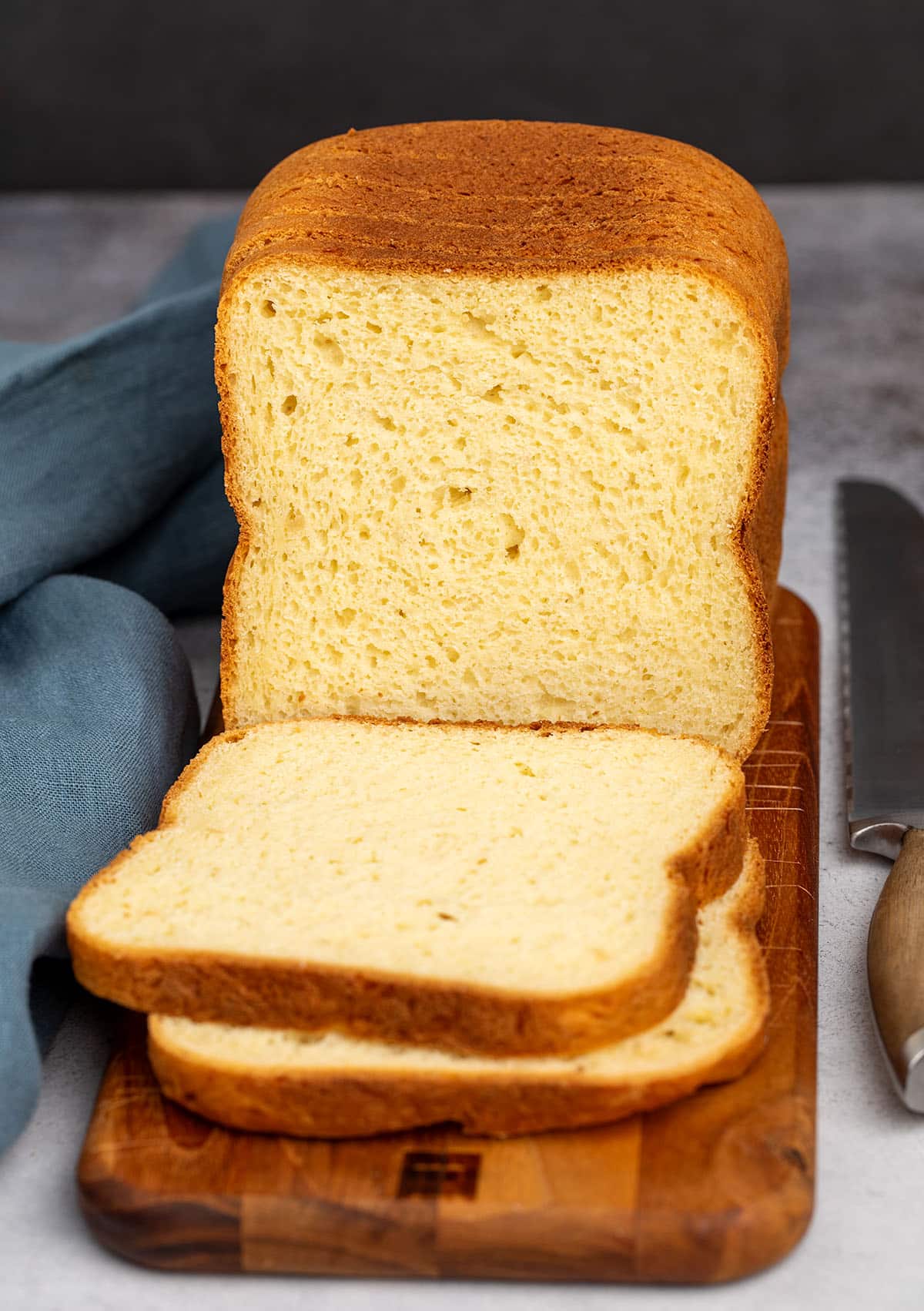
Table of Contents
- Why this recipe works in a bread machine
- Recipe ingredients
- How to make this gluten free bread recipe in a bread machine
- Bread Machine Tips for the Best Gluten Free Loaf
- Ingredient substitutions and allergy-friendly options
- 🔄 Thinking of using your oven?
- Gluten Free Bread Recipe For Bread Machine
- Storage instructions
- Gluten Free Bread Machine FAQs
Why this recipe works in a bread machine
Not every gluten free bread recipe can be made in a bread machine. Here's why this recipe works so well in one:
Soft crumb, crisp crust: It bakes up with a tender, open crumb and a golden-brown crust that isn’t too hard or chewy.
Buttery flavor: Even with just one rise, it develops a subtle tang and deep, buttery flavor.
Optimized dough texture: The dough is soft enough to be thoroughly mixed by a bread machine paddle, but not so wet that the loaf collapses as it cools.
Brand agnostic: This recipe fits the cycle of most modern bread makers, especially those with a single rise and longer bake.
Recipe ingredients
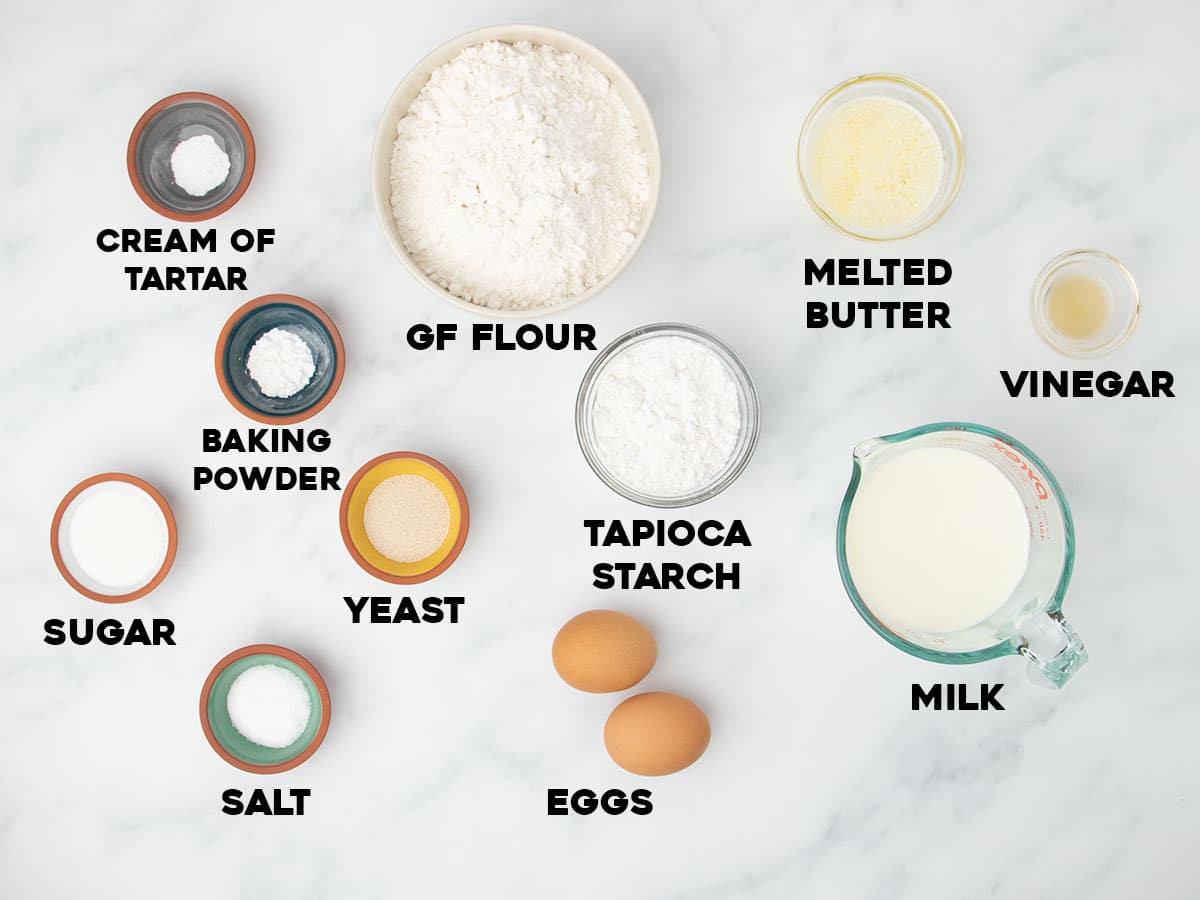
To make this gluten free bread recipe work in your bread machine, you’ll need a few extra ingredients that improve rise, structure, and flavor. Here's what each one does and why it matters:
- Gluten free flour blend: Any high quality, rice flour-based all purpose gluten free flour blend should work fine, as long as it's meant to be used for yeast bread (unlike KAF Measure for Measure). If you use Bob's Red Mill 1-to-1 gluten free, you'll need to add more xanthan gum.
- Tapioca starch: Adds more stretch and flexibility to the bread. Add this even though your all purpose blend already contains some.
- Cream of tartar & vinegar: Both add some acidity to the bread to help it rise.
- Baking powder: Adds some instant rise to the bread and acts as insurance in case your bread machine's preset rising time of 1 hour isn't quite enough.
- Sugar: Feeds the yeast, adds a bit of tenderness to the crumb.
- Salt: Controls the yeast, and adds flavor.
- Yeast: Provides most of the rise and even some flavor without a first rise.
- Milk: Adds moisture, brings the dough together, and adds richness.
- Eggs: Help with rise and structure. The yolks also add richness and flavor.
- Butter: Adds moisture, flavor, and tenderness.
How to make this gluten free bread recipe in a bread machine
Making gluten free bread in a bread machine is as easy as layering the ingredients, setting your machine, and letting it do the work. Just follow these steps to get a consistent, bakery-style loaf every time.
To begin making this gluten free bread in your bread maker, whisk the wet ingredients—warm milk, melted butter, apple cider vinegar, and eggs—in a large liquid measuring cup. In a separate bowl, whisk together the dry ingredients, except for the yeast: gluten free flour blend with xanthan gum, tapioca starch, cream of tartar, baking powder, sugar, and salt.
Pour the wet mixture into the loaf pan of your bread machine. Then carefully spoon the dry mixture on top in a flat, even layer—do not mix.
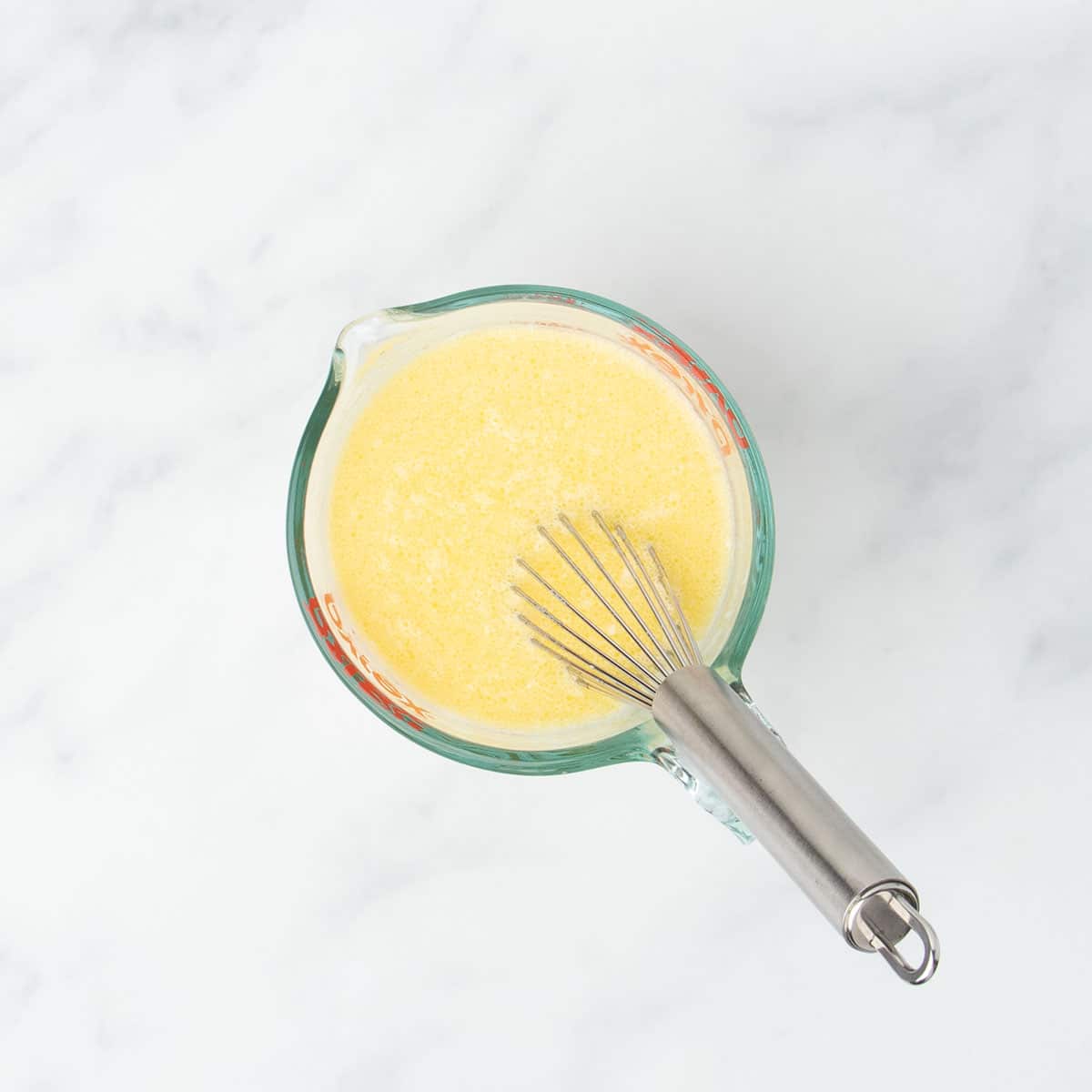
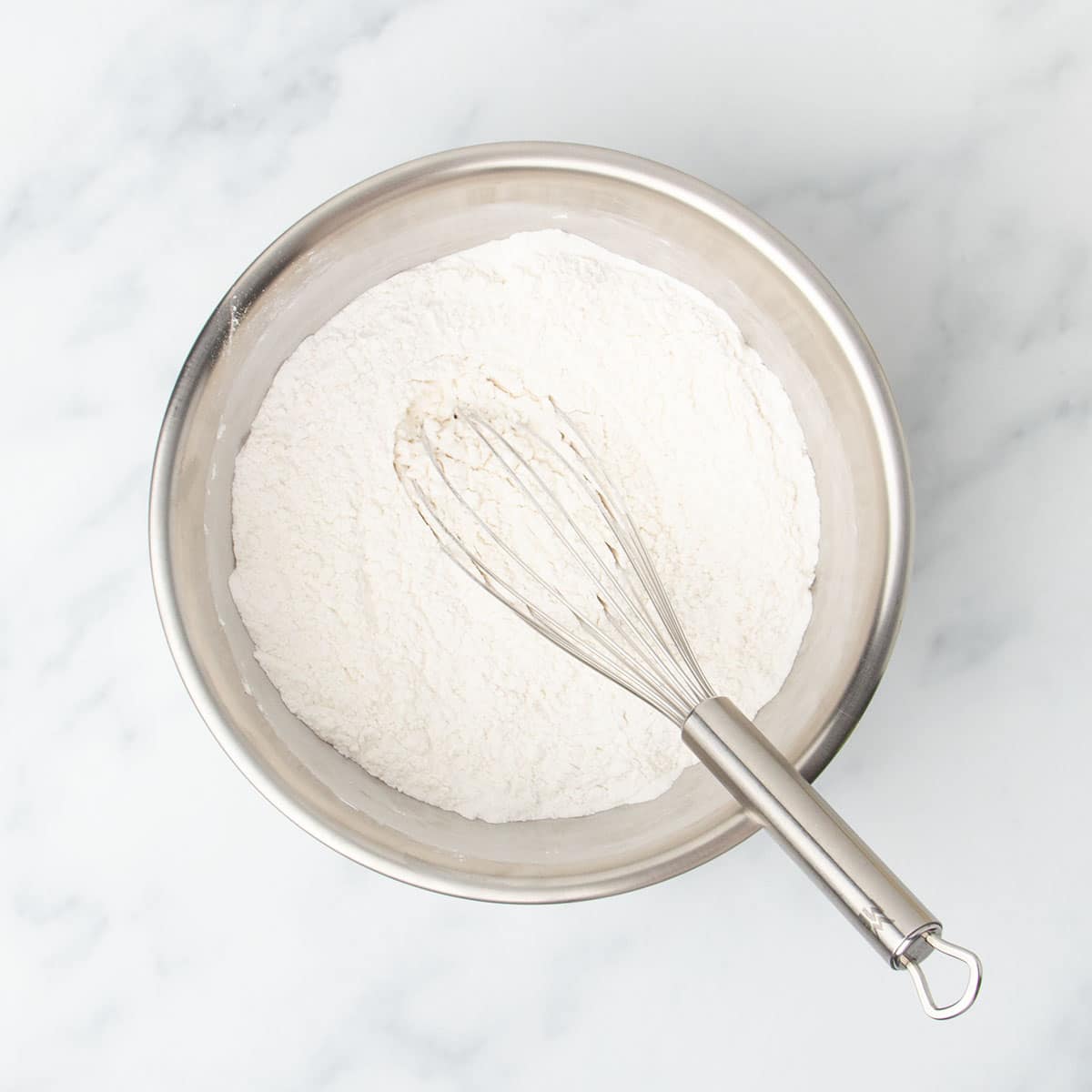
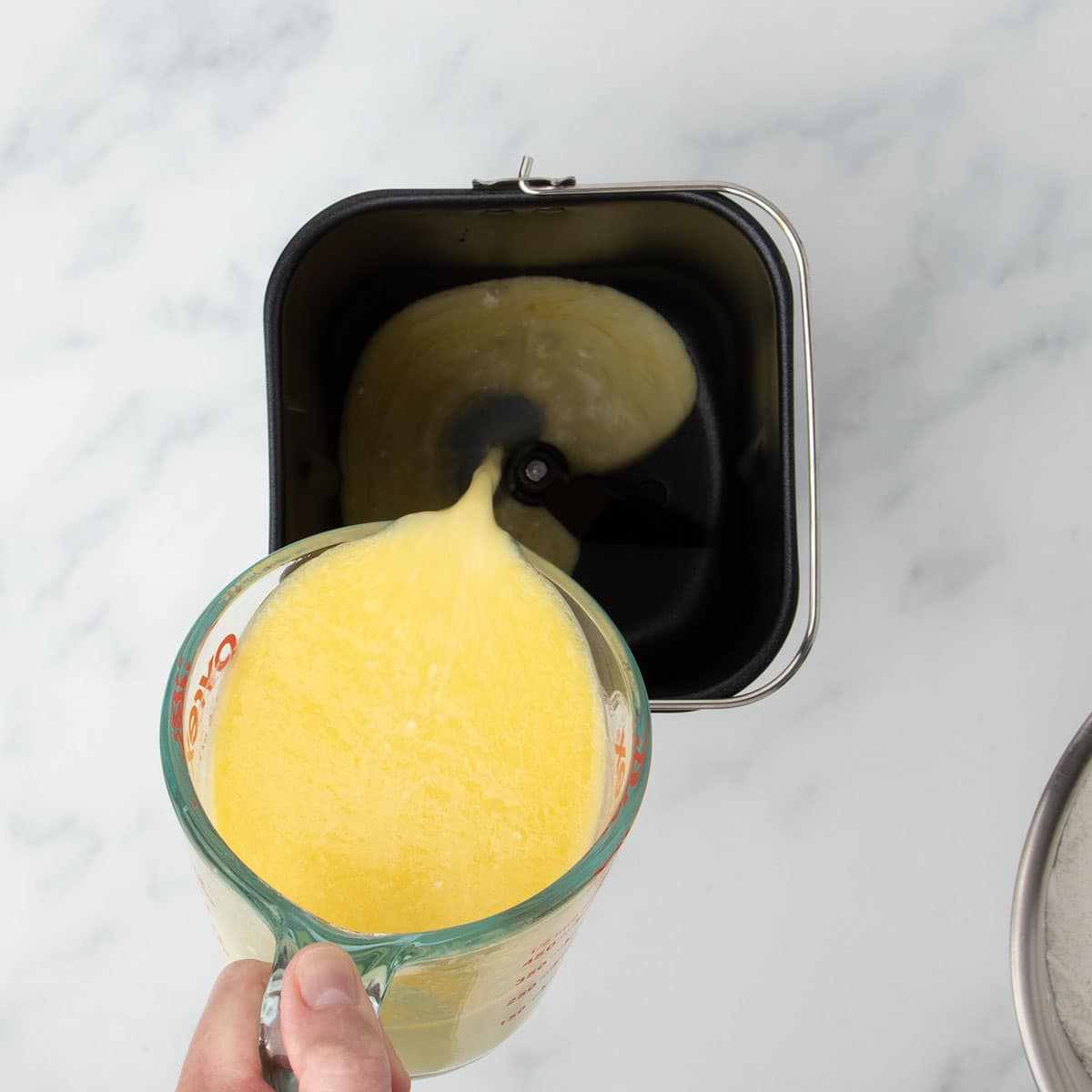
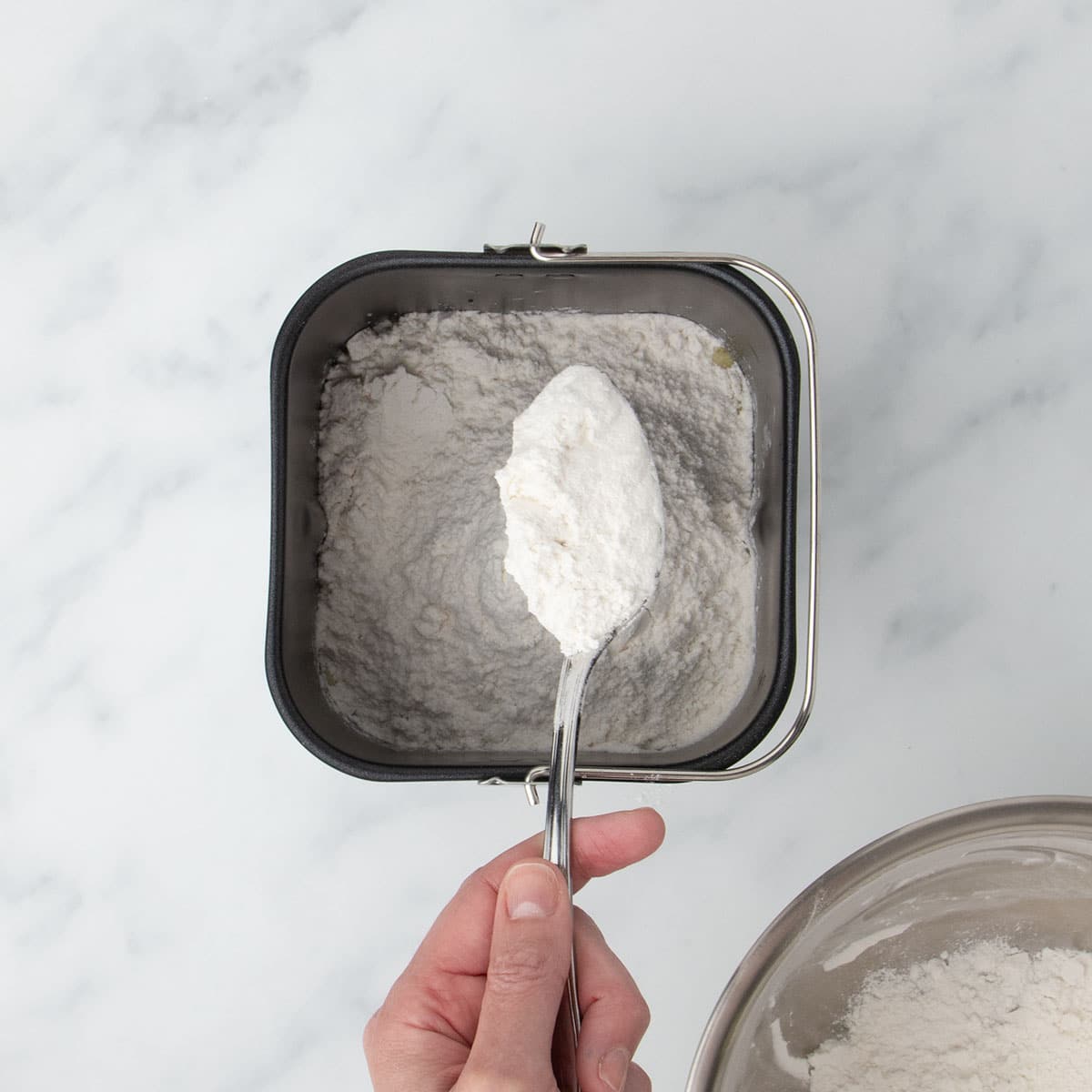
Use a clean finger to make a shallow well in the dry ingredients. Pour the yeast into the well, making sure it doesn’t touch the liquid below. Insert the pan into the bread machine.
Select the “homemade” setting on your bread machine, if available, and program it for a 1.5-pound loaf with:
– 20 minutes of mixing or kneading
– 1 rise of 1 hour
– 1.5 hours baking time
– Dark crust setting (if available)
If your machine doesn’t allow manual settings, use the “gluten free,” “rapid rise,” “basic,” or “1 rise” cycle instead. Close the lid and start the machine.
When the mixing cycle finishes, use a silicone spatula to scrape down the sides of the pan and incorporate any dry spots. Smooth the top of the dough, then close the lid and allow the machine to complete the rise and bake cycle.
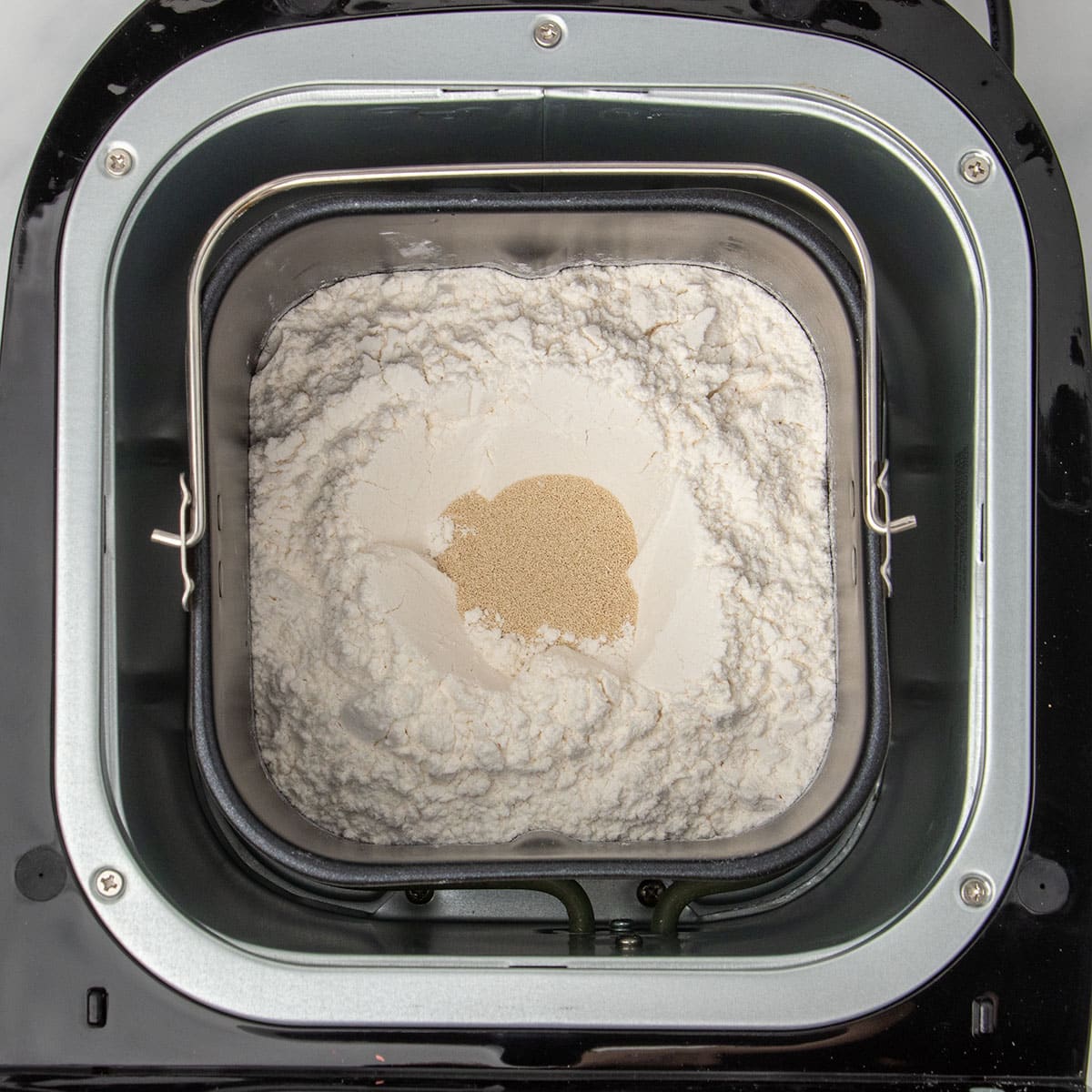
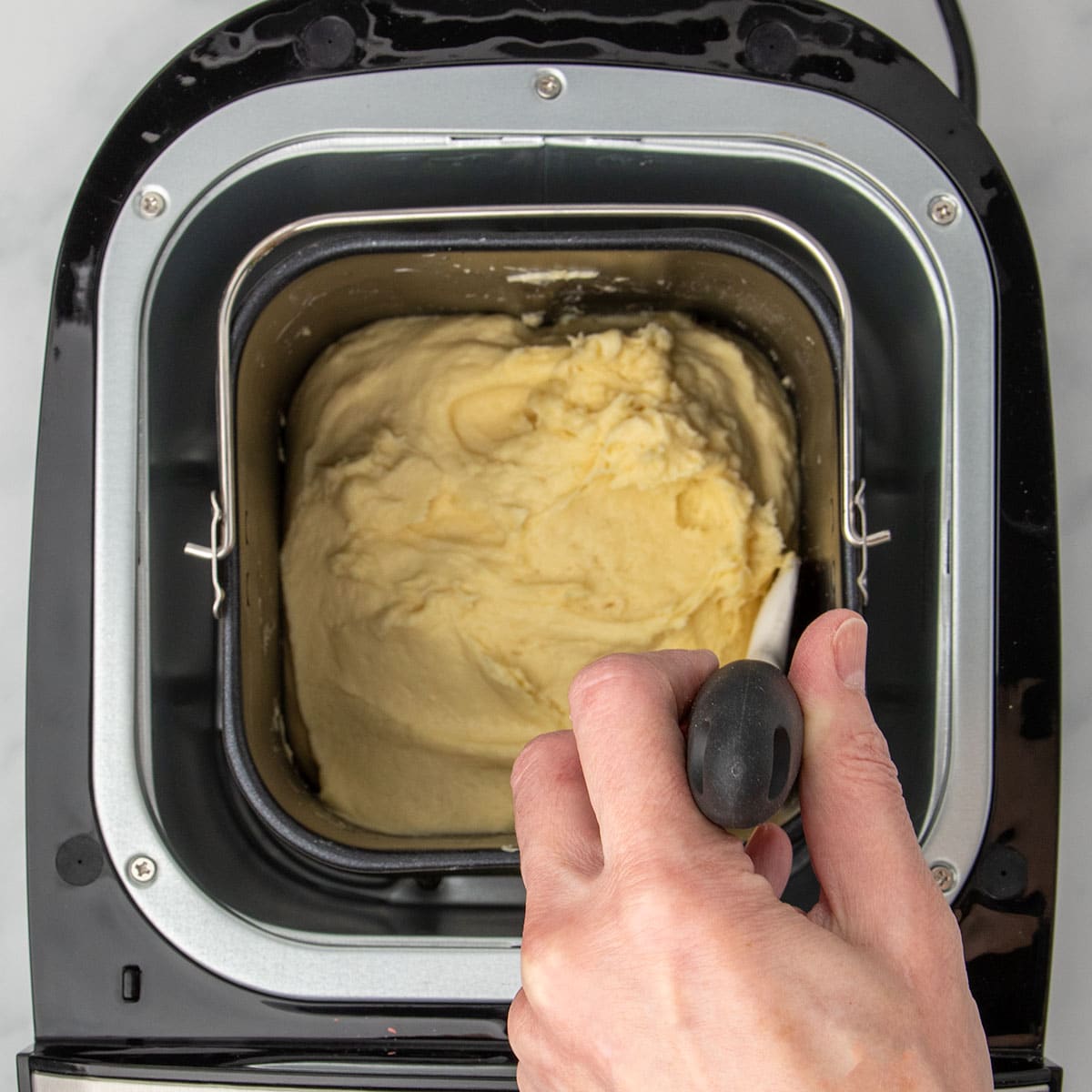
Let the loaf bake for at least 1 hour, or until it reaches an internal temperature of 205°F on an instant-read thermometer. If your machine browns the top, continue baking until it’s golden and firm to the touch.
As soon as baking is complete, remove the loaf pan and turn the bread out onto a wire rack. Carefully remove the paddle if it’s stuck inside. Let the bread cool for at least 1 hour (ideally 2) before slicing, to allow the crumb to fully set.
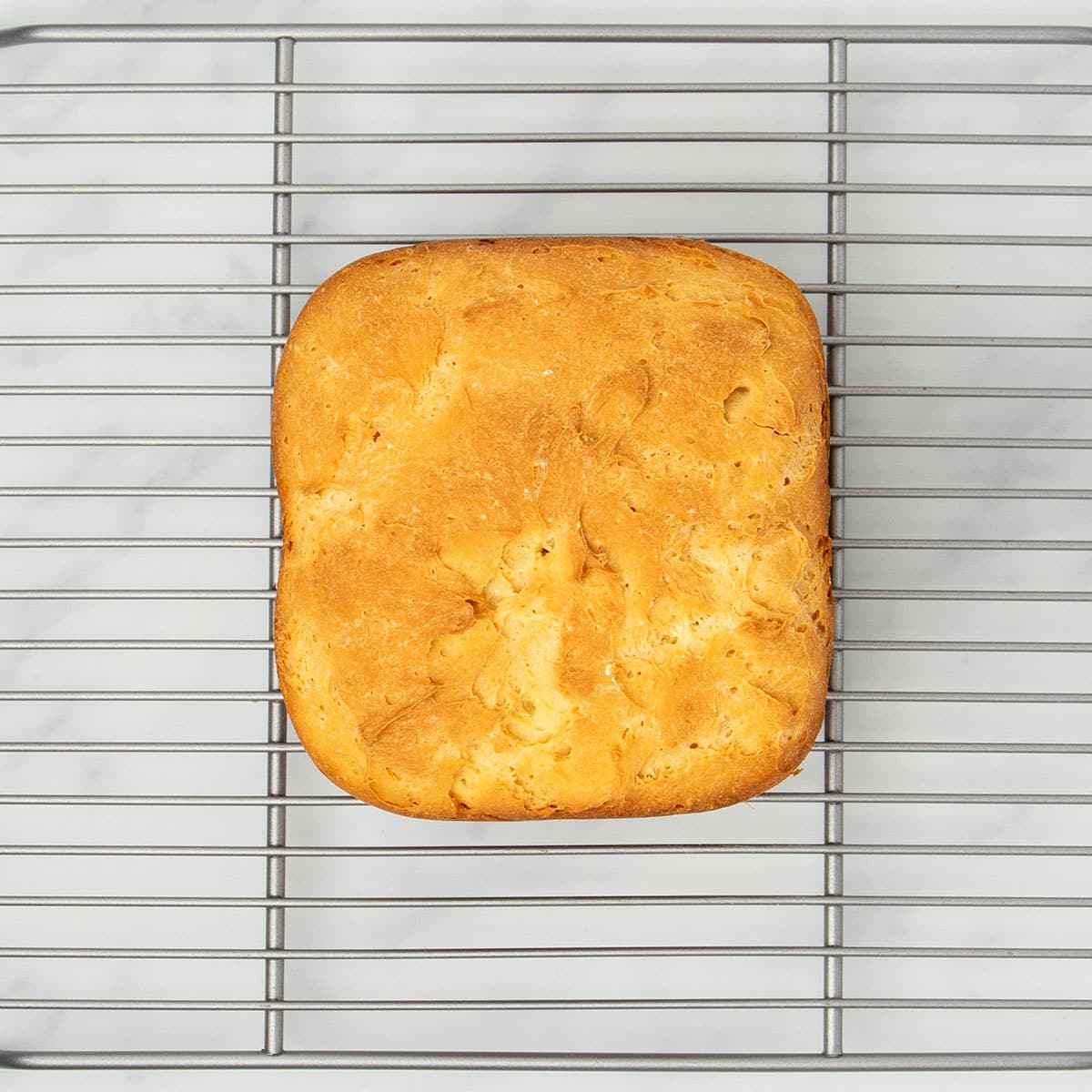
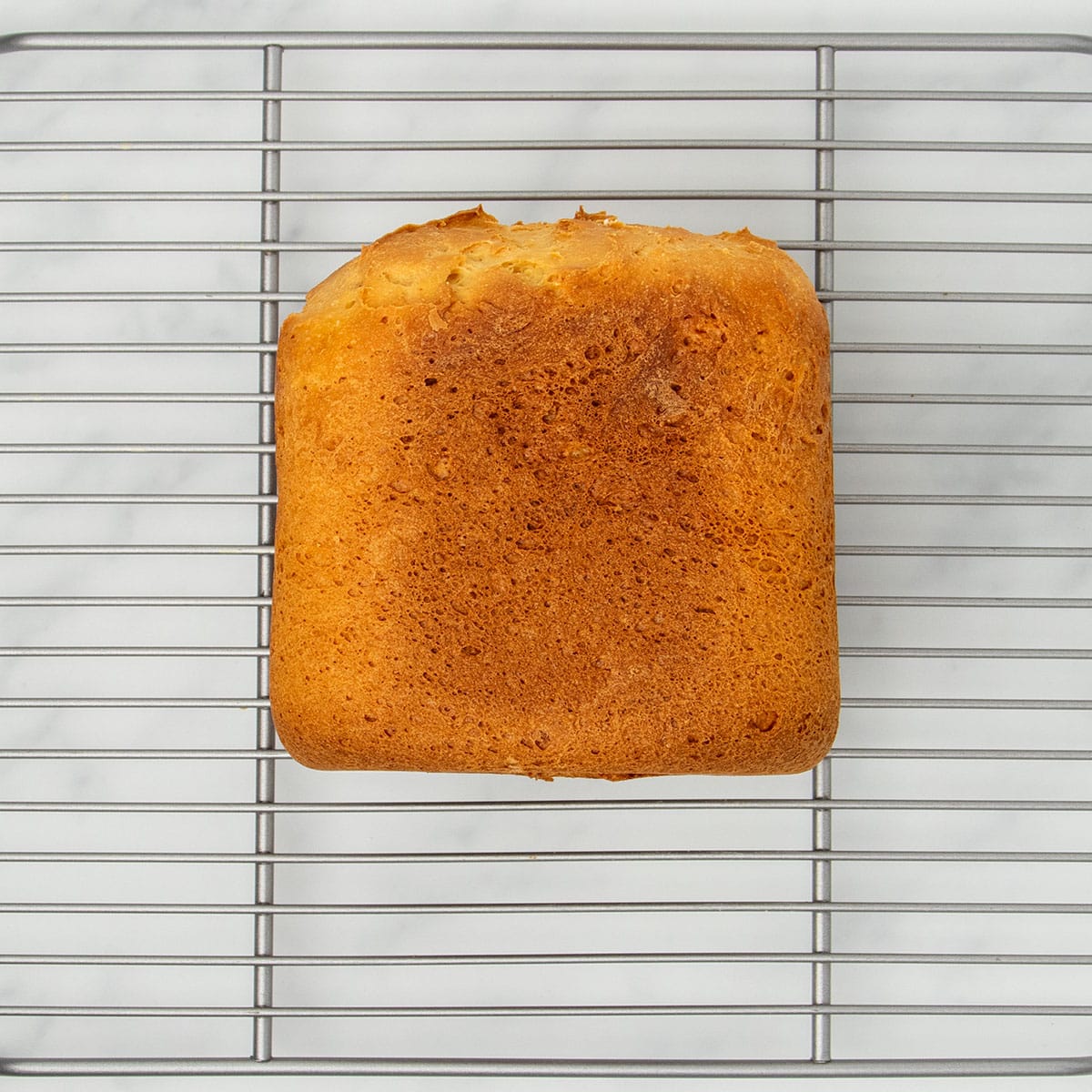
My Pro Tip
Bread Machine Tips for the Best Gluten Free Loaf
Choose a 1-rise cycle (or the “homemade” setting):
If your bread machine has a “homemade” or custom setting, use it—it gives you control over the knead, rise, and bake times. Otherwise, choose a preset with one kneading cycle and one rise, like “gluten free,” “rapid rise,” “basic,” or “one rise.” Skip any setting that includes a second rise or punch-down, which won’t work well with gluten free dough.
Start with warm or room-temperature ingredients:
Bread machines can’t adjust rise time for cold dough. If your milk, eggs, or butter are too cold, the yeast won’t activate properly and your loaf may not rise enough. Use ingredients at the temperature listed in the recipe—no shortcuts here.
Get a golden top crust (even if your machine can’t):
Set your machine to the darkest crust setting, if available. If the top doesn’t brown well, finish the loaf in a 400°F oven for 10 minutes after baking. A golden, firm top means the crumb inside is fully baked.
Cool completely before slicing:
Wait at least 1 hour (ideally 2) before slicing your loaf. Cutting too soon especially into gluten free bread leads to gummy slices and releases steam that can dry the bread out.
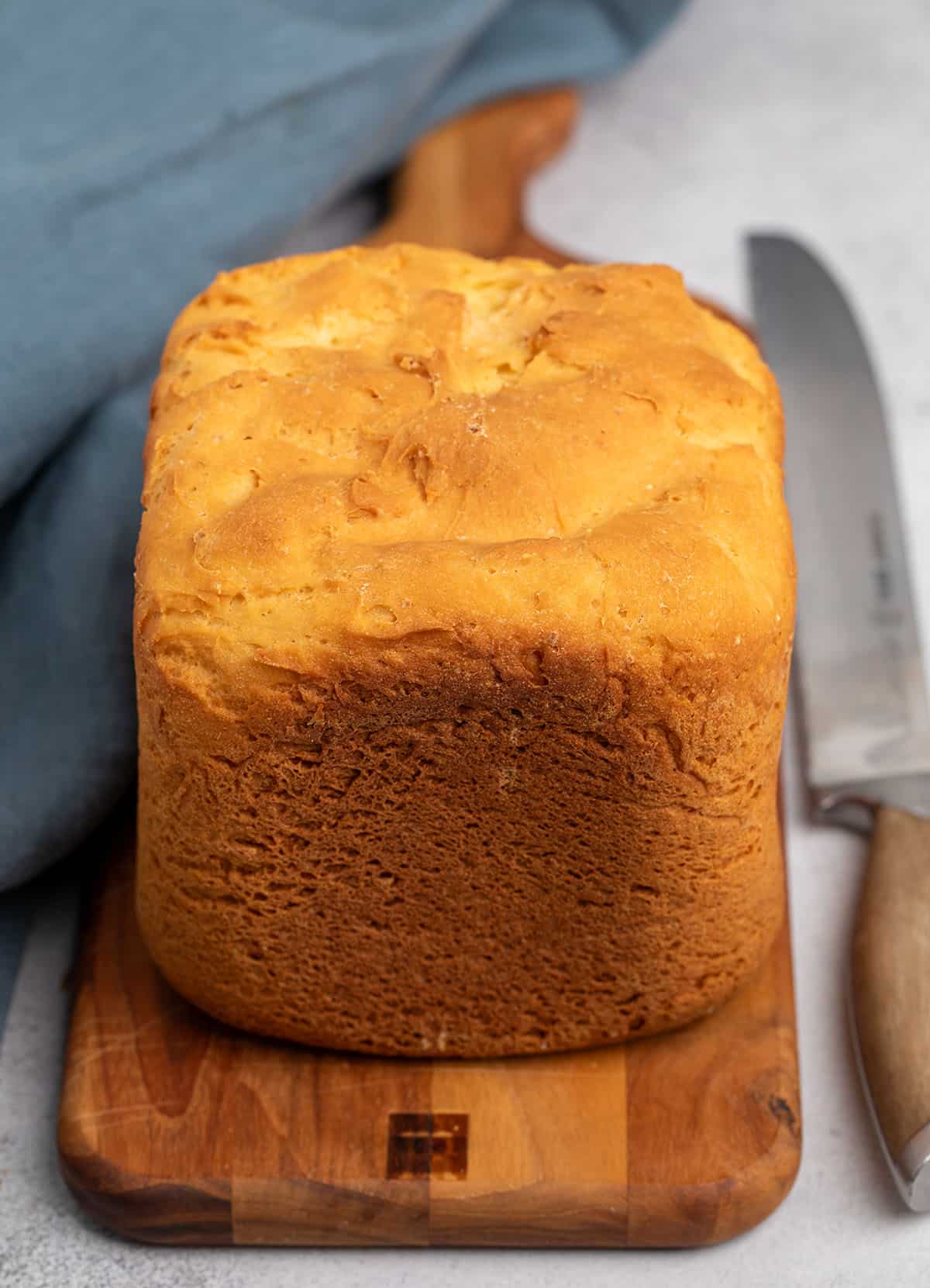
Ingredient substitutions and allergy-friendly options
Dairy Free:
Use unsweetened almond milk or another smooth, unflavored nondairy milk (avoid gritty options like oat milk). Replace butter with vegan butter from a block for best flavor. You can use 35 grams (2½ tablespoons) neutral oil, but the bread will be less rich.
Egg Free:
Try two flax or chia eggs (1 tbsp ground seed + 3 tbsp water per egg). Bob’s Red Mill Egg Replacer or refrigerated JustEgg may also work, but results may vary.
Tapioca Starch:
Even if your flour blend includes tapioca, you still need the extra here for structure and flexibility. If needed, replace it with more flour blend by weight or superfine glutinous white rice flour—but tapioca starch gives the best texture.
Yeast:
No substitute for yeast here, but you can use active dry yeast instead of instant. Use 10 grams total, mix it into the milk mixture, and let it sit until bubbly before continuing.
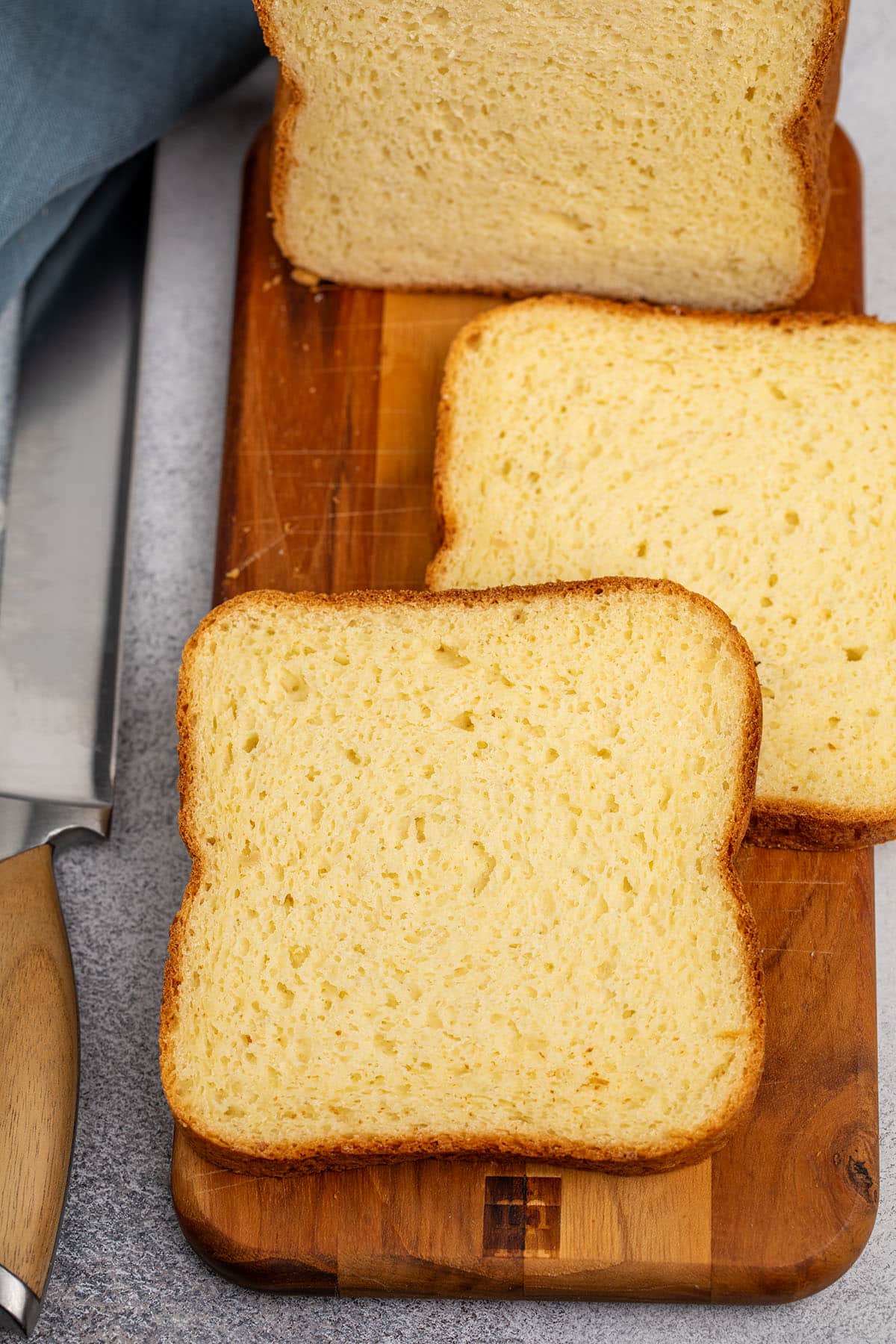
🔄 Thinking of using your oven?
This recipe was made just for bread machines.
If you’d rather bake your bread in a regular oven, check the FAQ below for the link to my classic loaf.
Gluten Free Bread Recipe For Bread Machine
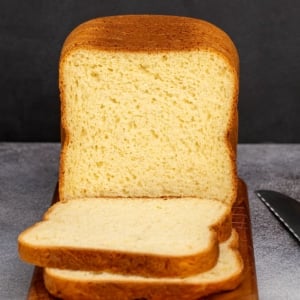
Equipment
- Bread machine with "homemade" adjustable setting or at least a "gluten free" setting (See Recipe Notes)
Ingredients
- 1 ½ cups (12 fluid ounces) whole milk, warm (about 95°F)
- 3 tablespoons (42 g) unsalted butter, melted and cooled
- 1 teaspoon apple cider vinegar
- 2 (100 g (weighed out of shell)) eggs, at room temperature
- 2 ⅝ cups (368 g) all purpose gluten free flour blend, (See Recipe Notes)
- 3 teaspoons xanthan gum omit, if your blend already contains it
- ½ cup (72 g) tapioca starch/flour
- ¼ teaspoon cream of tartar
- ½ teaspoon baking powder
- 2 tablespoons (24 g) granulated sugar
- 2 teaspoons (12 g) kosher salt
- 2 ½ teaspoons (8 g) instant yeast, (See Recipe Notes)
Instructions
- Remove the loaf pan from your bread machine and attach the mixing paddle. Set the pan aside.
- In a large liquid measuring cup or mixing bowl, whisk together the warm milk, melted butter, vinegar, and eggs until fully combined.
- In a separate bowl, whisk together the gluten free flour blend, xanthan gum, tapioca starch, cream of tartar, baking powder, sugar, and salt.
- Pour the wet ingredients into the loaf pan. Carefully spoon the dry mixture on top in an even layer—do not mix. Use a clean finger to make a small well in the center and add the yeast to the well.
- Plug in and set up your bread machine for use.
- If your machine has a “homemade” or custom setting, set it for:• 1.5 pound loaf setting• 20 minutes of mixing/keading (1 cycle only)• 1 hour rise (one rise only)• 1.5 hours baking• Dark crust (if available)Otherwise, choose a “gluten free,” “basic,” or “one rise” cycle.
- Place the bread pan securely in the machine and close the lid. Press the start button.
- Listen for when the mixing/keading cycle is done or nearly done, and use a silicone spatula to scrape down the sides of the pan to mix in any loose flour.
- Wet the spatula, and smooth the top of the raw dough into an even layer.
- Close the lid and allow the bread to rise fully and bake for 1 hour.
- Open the lid and use an instant read thermometer to check the internal temperature at the center of the loaf. It should read at least 205°F.
- If your machine browns the top, let it bake until the top is browned and feels firm on top (another 15 to 20 minutes).
- When baking is complete, check that the internal temperature reaches 205°F. If the top isn’t fully browned, remove the bread from the pan and bake in a 400°F oven for 10 more minutes.
- Let the bread cool on a wire rack for at least 1 hour (ideally 2) before slicing.
Notes
- Better Batter Original Blend – Works beautifully
- Nicole’s Best Blend – Be sure to add 3 tsp xanthan gum
- King Arthur GF Bread Flour – Works, but loaf may be denser
- Caputo Fioreglut – Loaf may be shorter and pale
- KAF Measure for Measure – Not suitable for yeast recipes
- Cup4Cup – Formula changed and I no longer recommend it.
- Bob’s Red Mill 1-to-1 – I can usually use it somewhat effectively in yeast bread by adding an extra 1 1/2 teaspoons xanthan gum to the dry ingredients, but it's not a recommended blend here
Nutrition
Nutrition information is automatically calculated, so should only be used as an approximation.
make ahead/leftovers
Storage instructions
Yeast bread is always best the day it's made. If you wrap the cooled loaf tightly in plastic wrap, unsliced, it will still be great the next day.
For longer storage, place it in a freezer safe zip top bag, sliced or unsliced, squeeze out as much air as possible and freeze for up to 3 months.
Defrost by the slice in a toaster oven or microwave. To refresh any slightly stale slices, sprinkle lightly with lukewarm water and place in a 300°F toaster oven for 5 to 10 minutes or until warm.
Gluten Free Bread Machine FAQs
You can, but I don’t recommend it. I tested this bread machine recipe with 2 tablespoons (42g) of honey and found the flavor overpowering. If you still want to try, reduce the milk by 1 tablespoon to keep the dough balanced.
If your gluten free flour blend doesn’t already contain xanthan gum, you can try using 20 grams of blond psyllium husk instead. Expect a slightly different texture.
Yes, King Arthur’s Gluten Free Bread Flour works here, but expect a slightly shorter loaf with a tighter crumb. You may need to increase the liquid by about 10%. Don’t use my homemade gluten free bread flour blend—it's not suitable for this bread machine recipe.
Usually, yes—but it depends on your model. Check your manual or look up instructions online. For example, with the KitchenArm bread maker, you have to unplug the machine and wait at least 15 minutes before you can reset it.
Yes—just scale the recipe down by one-third (from 8 to 5 slices). Use about 67 grams of egg total (1 extra-large egg or a portion of two beaten eggs).
No—this recipe was developed specifically for bread machines. For a traditional oven-baked loaf, use my classic gluten free bread recipe, instead.
I’ve used the KitchenArm 29-in-1 SMART Bread Machine and recommend it for its “homemade” setting, general effectiveness, and reasonable price. Look for a machine that lets you control the knead, rise, and bake times. I have a Zojirushi brand bread machine, but it's very expensive and you have to make at least a 2 pound loaf because the pan is very large. If you have that machine and want to use it, increase the yield in the recipe card from 8 slices to 12 slices to fill out the loaf. You'll need to brown the top in the oven as described above.

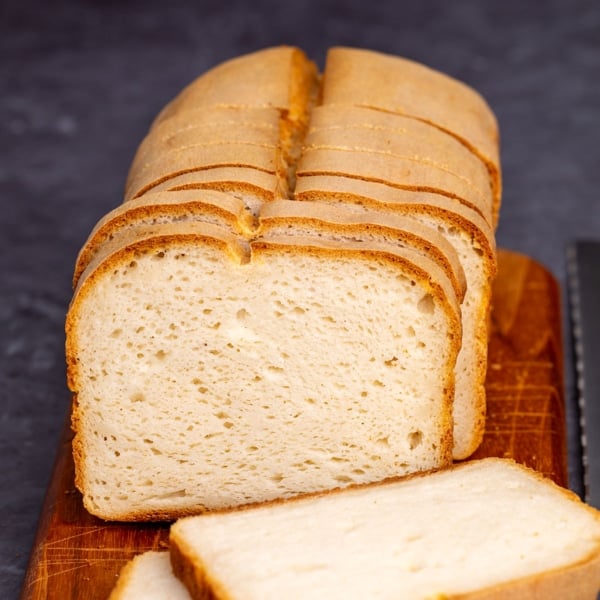
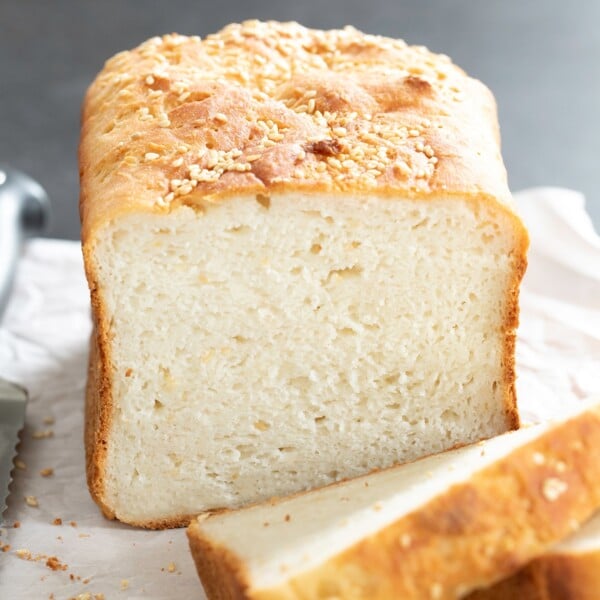
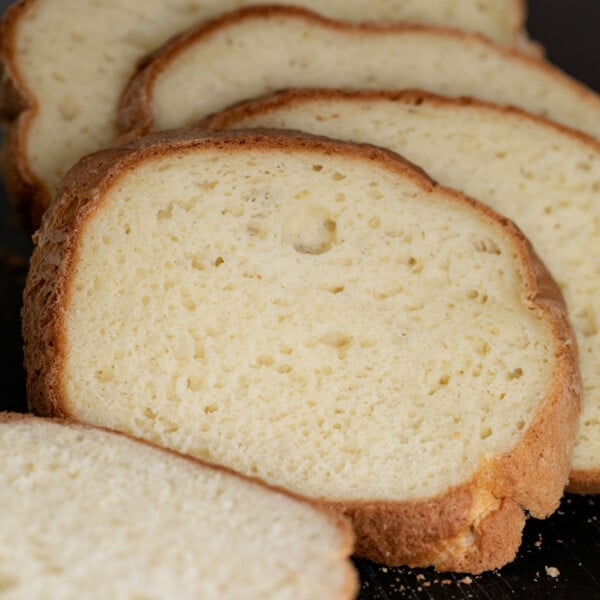










I am blown away by this. I’ve been trying to find a good gluten free bread recipe for so long, and I have been so discouraged recently until I came across this and gave it a shot. This bread is soft but not crumbly, the flavor and texture are perfect! I was even able to make and eat a sandwich with this bread!! (no small feat for gluten free bread, especially homemade!!) THANK YOU!!
I’m so glad you’re enjoying this bread machine recipe, Dez. Thanks so much for sharing your experience, and you’re so welcome. I wonder if your previous bad experiences were at least in part due to the fact that you were trying to make a recipe in the bread machine that was developed to be made in an oven. Despite what some other recipe developers will tell you, that just doesn’t work. So glad you’re happy with these results!